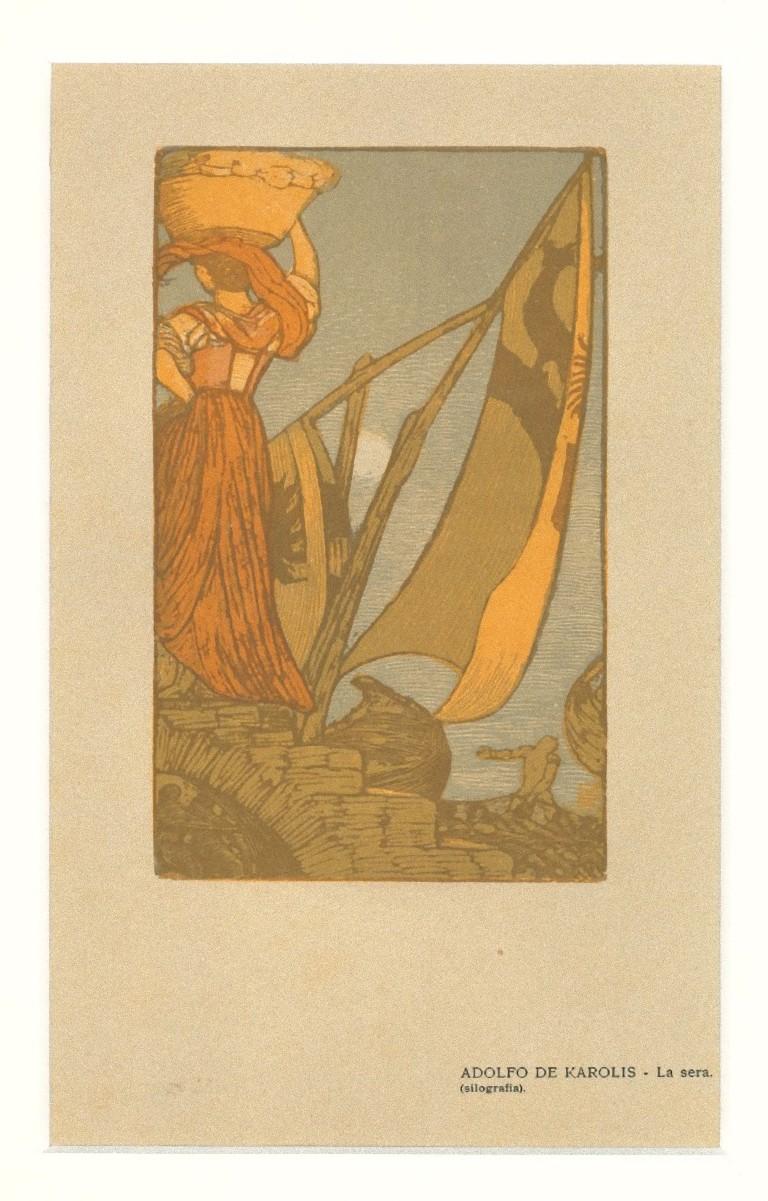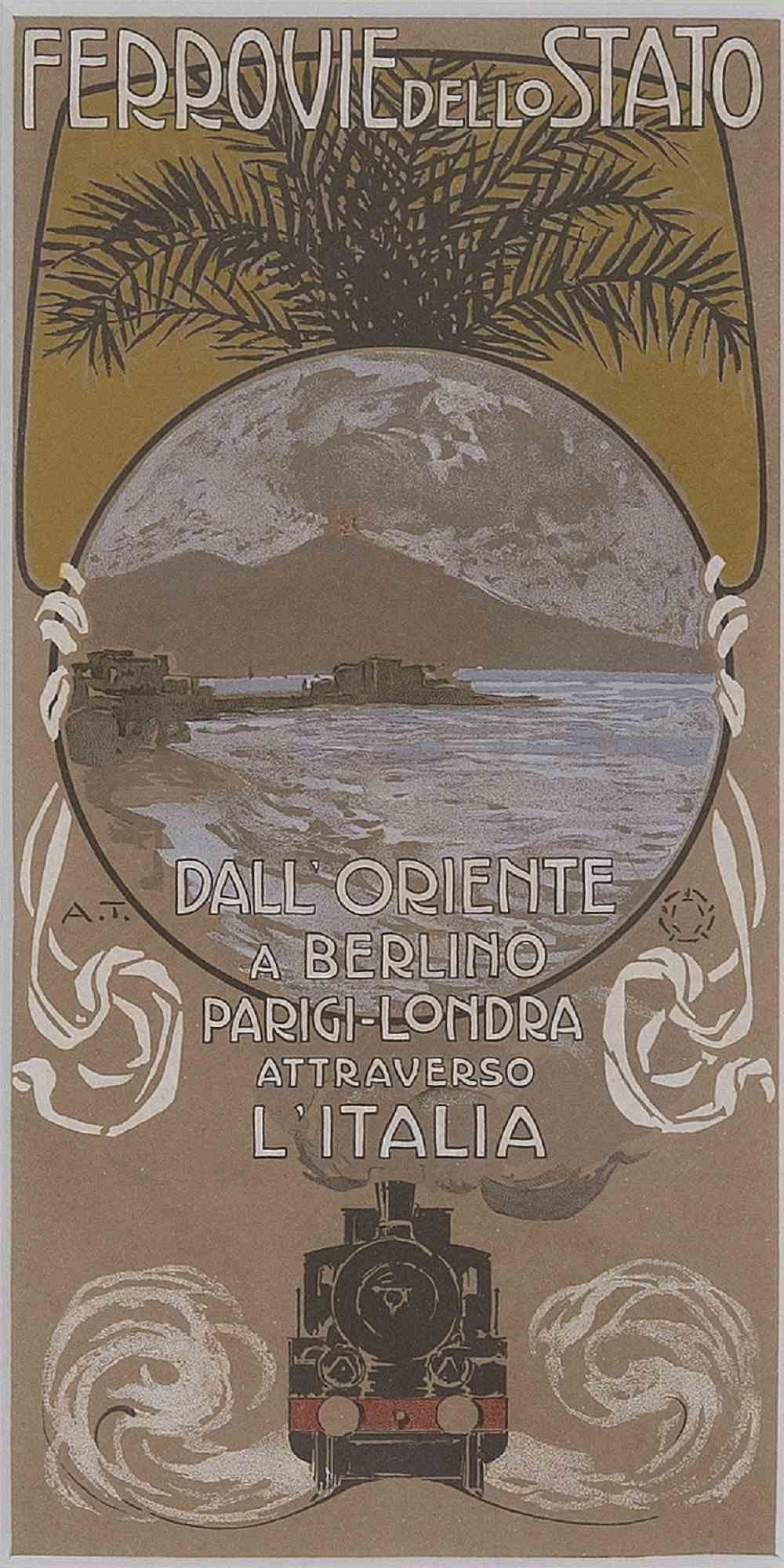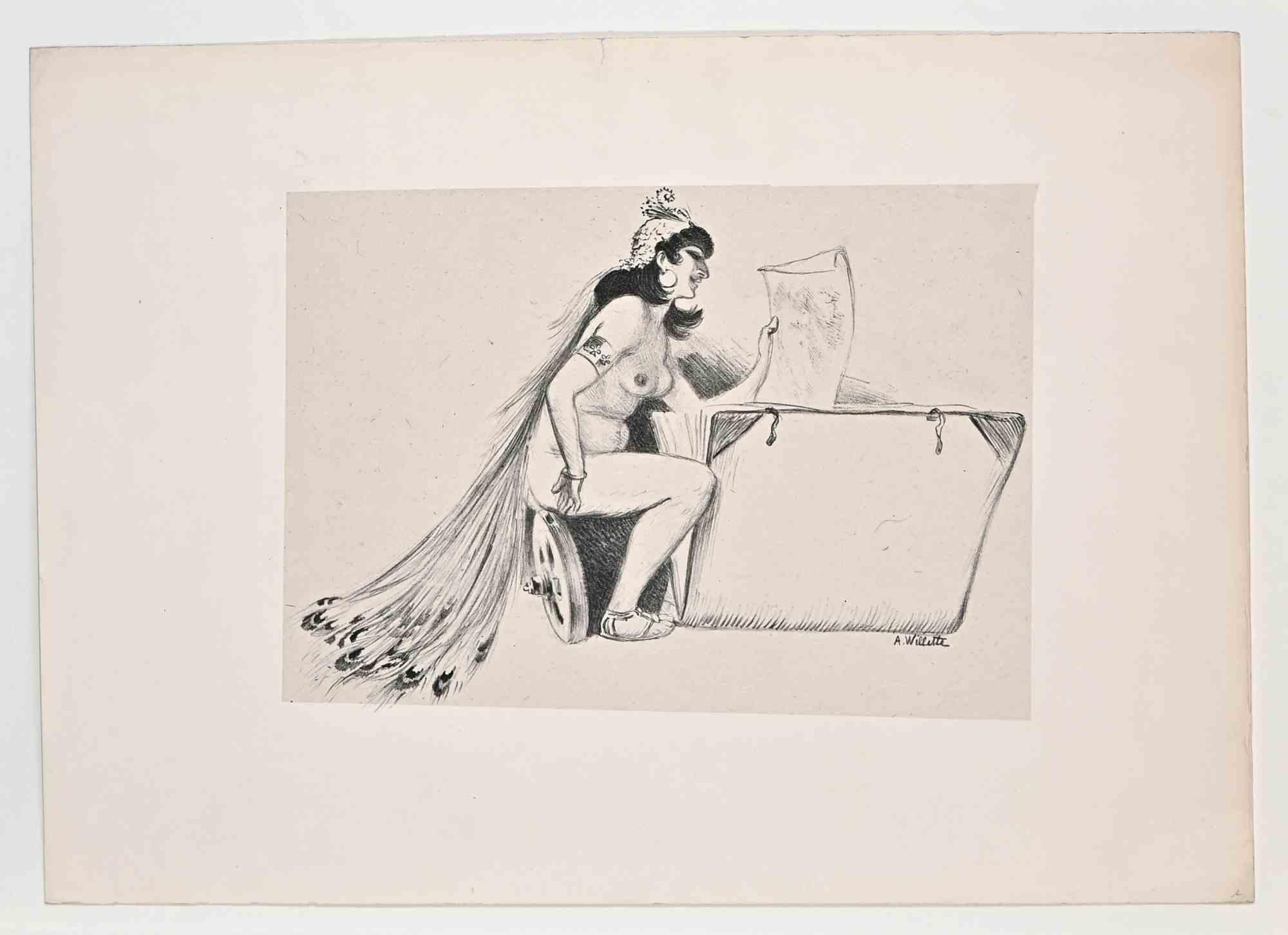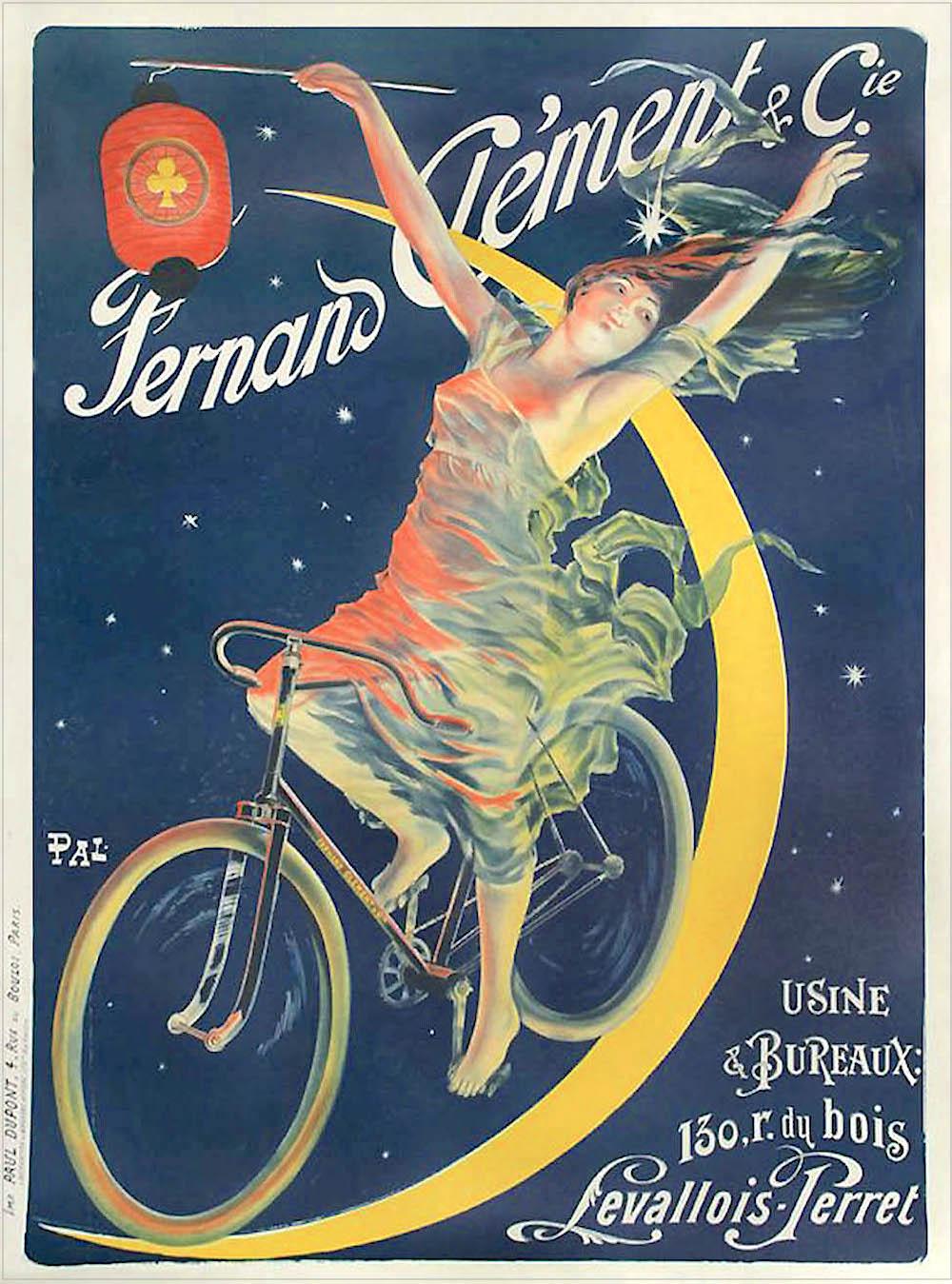Alphonse Mucha"Bénédictine" Original 1898 Lithograph, Alphonse Mucha1898
1898
About the Item
- Creator:Alphonse Mucha (1860 - 1930, Czech)
- Creation Year:1898
- Dimensions:Height: 82 in (208.28 cm)Width: 30 in (76.2 cm)
- Medium:
- Movement & Style:
- Period:
- Condition:Custom frame with white gold-leaf and Optium plexi. “Jack Rennert and Alain Weill, Alphonse Mucha: The Complete Posters and Panels, Boston, 1984, p. 225”.
- Gallery Location:Chicago, IL
- Reference Number:1stDibs: LU467310347592
Alphonse Mucha
Alphonse Mucha is acclaimed for his distinctly stylized and decorative Art Nouveau illustrated posters and prints — particularly those depicting beautiful French actress and famous artists’ muse Sarah Bernhardt. His work remains widely loved by everyone from bohemian students to serious collectors.
Mucha and his contemporaries treated femininity as the antidote to the impersonal, masculine world of the industrial revolution — it was to be celebrated and embraced. He fervently believed that art is a crucial, enjoyable benefit to humankind, and it should be accessible to as many people as possible.
Mucha showed an early talent for drawing. Rejected when he applied to the Academy of Fine Arts in Prague in 1878, he traveled to Vienna — two years later at the age of 19 — and found work painting theater backdrops. After a tragic fire that destroyed the theater that employed him, he returned home and began painting portraits. Count Eduard Khuen Belasi hired Mucha to paint a series of murals for his residence.
In 1885, the Count sent Mucha to the Munich Academy of Fine Arts — paying his tuition and living expenses. Mucha moved to Paris in 1888 to continue his studies, where he shared a studio with Paul Gauguin. There, he became enamored with the nude female form and allegorical studies. He enjoyed some financial success with magazine illustration work, which led to lucrative book illustration commissions. One of Mucha’s illustrations for the book Scenes and Episodes of German History received a medal of honor at the 1894 Paris Salon of Artists.
In 1894, Mucha began a six-year contract for the acclaimed stage actress Sarah Bernhardt, creating posters for her shows and tours. His first poster was an immediate sensation and cemented his fame in the Art Nouveau poster artist community.
Mucha designed some of the most famous posters of the era — a time when these works were key to the fabric of the cosmopolitan thoroughfare in the French capital. He created advertisements for JOB cigarette papers, Ruinart champagne, Lefèvre-Utile biscuits and Moët-Chandon champagne. Although Mucha is renowned for his posters, he spent the latter half of his life on decorative panel works and Czech nationalist artworks — many of them in the collection at the Mucha Museum in Prague.
Find original Alphonse Mucha nude prints, figurative prints, wall decorations and other art on 1stDibs.

- ShippingRetrieving quote...Ships From: Chicago, IL
- Return PolicyA return for this item may be initiated within 3 days of delivery.
- The JockeyBy Henri de Toulouse-LautrecLocated in Chicago, ILColor lithograph on Chine volant, 1899. Edition of aproximately 112. Printed by H. Stern, Paris. Published by Pierrefort, Paris. Reference: Wittrock; 308-2nd edition, vol. 2, pg. 6...Category
1890s Art Nouveau Figurative Prints
MaterialsLithograph
- "Princess Hyacinthe" Original 1911 Lithograph, Alphonse MuchaBy Alphonse MuchaLocated in Chicago, IL“One of Mucha’s best Czech posters, printed by the firm of V. Neubert in the Smichov quarter of Prague, was for Princezna Hyacinta, a fairy-tale ballet and pantomime with music by Oskar Nedbal and libretto by Ladislav Novák. The portrait of the popular actress Andula Sedlácková as the princess dominates the poster. The plot develops as a dream of a village blacksmith who falls asleep after digging for a buried treasure. In his dreams he becomes lord of a castle, and his daughter Hanicka becomes the Princess Hyacinth. Of her three suitors, one is a sorcerer who abducts her to his underground palace, but she is rescued by a poor knight who looks like her real-life lover. Mucha used the motif of the hyacinth throughout the entire design, from embroideries to silver jewelry, and for an elaborate circle sparkling against the mossy green background. The portrait of the actress is seen against a sky full of stars and encircled with images from the dream: the blacksmith’s tools...Category
1910s Art Nouveau Figurative Prints
MaterialsLithograph
- Delftsche SlaolieBy Jan TooropLocated in Chicago, ILJan Toorop was born in Java, studied in Holland and then spent three key years in Brussels, where he was a member of the circle of artists, "Les XX," during which time he befriended ...Category
1890s Art Nouveau Figurative Prints
MaterialsLithograph
- Femme Sous la Lampe (Woman Under the Lamp) signed lithograph; József Rippl-RónaiLocated in Chicago, ILFramed lithograph, signed ("Rónai") and numbered ("no. 50") by the artist. Also includes a silver József Rippl-Rónai coin, made in 1977 for the 50th anniversary of his death. The li...Category
1890s Art Nouveau Figurative Prints
MaterialsLithograph
- Laderlappen - Original Lithograph Poster by Walter SchnackenbergBy Walter SchnackenbergLocated in Chicago, ILPrinted by Oscar Consee, Munich, 1922 Not much is known about this Stockholm-based cabaret act. Translating literally as Bat Man, we see a young dancer tease an oversized bat wearing a monocle -- a truly bizarre but beautiful design. (text by Jack Rennert) Walter Schnackenberg’s style changed several times during his long and successful career. Having studied in Munich, the artist traveled often to Paris where he fell under the spell of the Henri de Toulouse-Lautrec’s colorful and sensuous posters depicting theatrical and decadent subjects. Schnackenberg became a regular contributor of similar compositions to the German magazines Jugend and Simplicissimus before devoting himself to the design of stage scenery...Category
1920s Art Nouveau Figurative Prints
MaterialsLithograph
- Fromme's Kalender Art Nouveau Lithograph Poster Koloman Moser Vienna SecessionBy Koloman MoserLocated in Chicago, ILLithograph printed by Albert Berger, Vienna. This design "was considered very advanced in 1899, with its large scale portrayal of the motif and the almost complete renunciation of interior drawing. The silhouette of the body is in mysterious contrast to the realistically portrayed head and hands. The unwavering gaze of the woman underlines the symbolism of the design: the Norn [ancient Norse goddess of fate] with the hour-glass and snake-ring embodies the eternal circle of life and the running out of time" (Vienna Secession, Denscher, p. 45). As the poster was originally used in 1899, the waning sand in the hourglass quite naturally can be assumed to be the coming of the end of the century. KOLOMAN MOSER: Instead of applying his flair and art education to paintings, Koloman Moser embodied the idea of Gesamt Kunstwerk (all-embracing art work) by designing architecture, furniture, jewelry, graphics, and tapestries meant to coordinate every detail of an environment. His work transcended the imitative decorative arts of earlier eras and helped to define Modernism for generations to come. Moser achieved a remarkable balance between intellectual structure (often geometric) and hedonistic luxury. Collaborating with Gustav Klimt and Josef Hoffmann, the artist was an editor and active contributor to Ver Sacrum, (Sacred Spring), the journal of the Viennese Secession that was so prized for its aesthetics and high quality production that it was considered a work of art. The magazine featured drawings and designs in the Jugendstil (Youth Style) along with literary contributions from distinguished writers from across Europe. It quickly disseminated both the spirit and the style of the Secession. In 1903 Moser and Hoffmann founded and led the Wiener Werkstatte (Viennese Workshop) a collective of artisans that produced elegant decorative arts items, not as industrial prototypes but for the purpose of sale to the public. The plan, as idealistic then as now, was to elevate the lives of consumers by means of beautiful and useful interior surroundings. Moser’s influence has endured throughout the century. His design sensibility is evident from the mid-century modern furniture of the 1950s and ‘60s to the psychedelic rock posters...Category
1890s Art Nouveau Figurative Prints
MaterialsPaper, Lithograph
- La Sera - Woodcut on Paper by Adolfo De Karolis - 1906Located in Roma, ITLa Sera is an original woodcut on ivory-colored paper realized by Adolfo De Karolis. The state of preservation is very good. Signed and titled, Ad...Category
Early 1900s Art Nouveau Figurative Prints
MaterialsLithograph
- Italian State Railways - Lithograph by A. Terzi - Early 20th CenturyBy Aleardo TerziLocated in Roma, ITItalian State Railways is an original artwork realized in the early century by Aleardo Terzi. Mixed colored lithograph. A vintage affiche depicting Ita...Category
Early 20th Century Art Nouveau Landscape Prints
MaterialsLithograph
- The Arts : The Dance - Lithograph - Edition Henri PiazzaBy Alphonse MuchaLocated in Paris, FRAlphonse MUCHA (1860-1939) (after) The Arts : The Dance Lithograph Printed signature in the plate Numbered / 500 Published in "Edition d'Art Henri Piazza" Authenticated by the blind...Category
2010s Art Nouveau Figurative Prints
MaterialsVellum, Lithograph
- Lady with Cupids and Dwarf - Lithograph by Adolphe Willette - 1906By Adolphe WilletteLocated in Roma, ITLady with Cupids and Dwarf is a Lithograph realized in 1906 by Willette (Adolphe Léon). Hand-signed with pencil on the lower right corner. Good condition with folding and consumed ...Category
Early 1900s Art Nouveau Figurative Prints
MaterialsLithograph
- Nude of Woman - Lithograph by Adolphe Willette - Early 20th CenturyBy Adolphe WilletteLocated in Roma, ITNude of Woman is an Original Lithograph realized by Willette (Adolphe Léon). Good condition on a grey paper included a white cardboard passpartout (32.5x48 cm). Address card for Sa...Category
Early 20th Century Art Nouveau Figurative Prints
MaterialsLithograph
- CLÉMENT CYCLES Lithograph, Woman on Bicycle, Moon, French Advertising Art 52"By Pal (Jean de Paléologue)Located in Union City, NJCLÉMENT CYCLES is a fine art lithograph re-creation after the original French advertising poster created by PAL(Jean de Paleologue) for Fernand Clément Bicycle Co., France. Hand craf...Category
1990s Art Nouveau Figurative Prints
MaterialsLithograph





